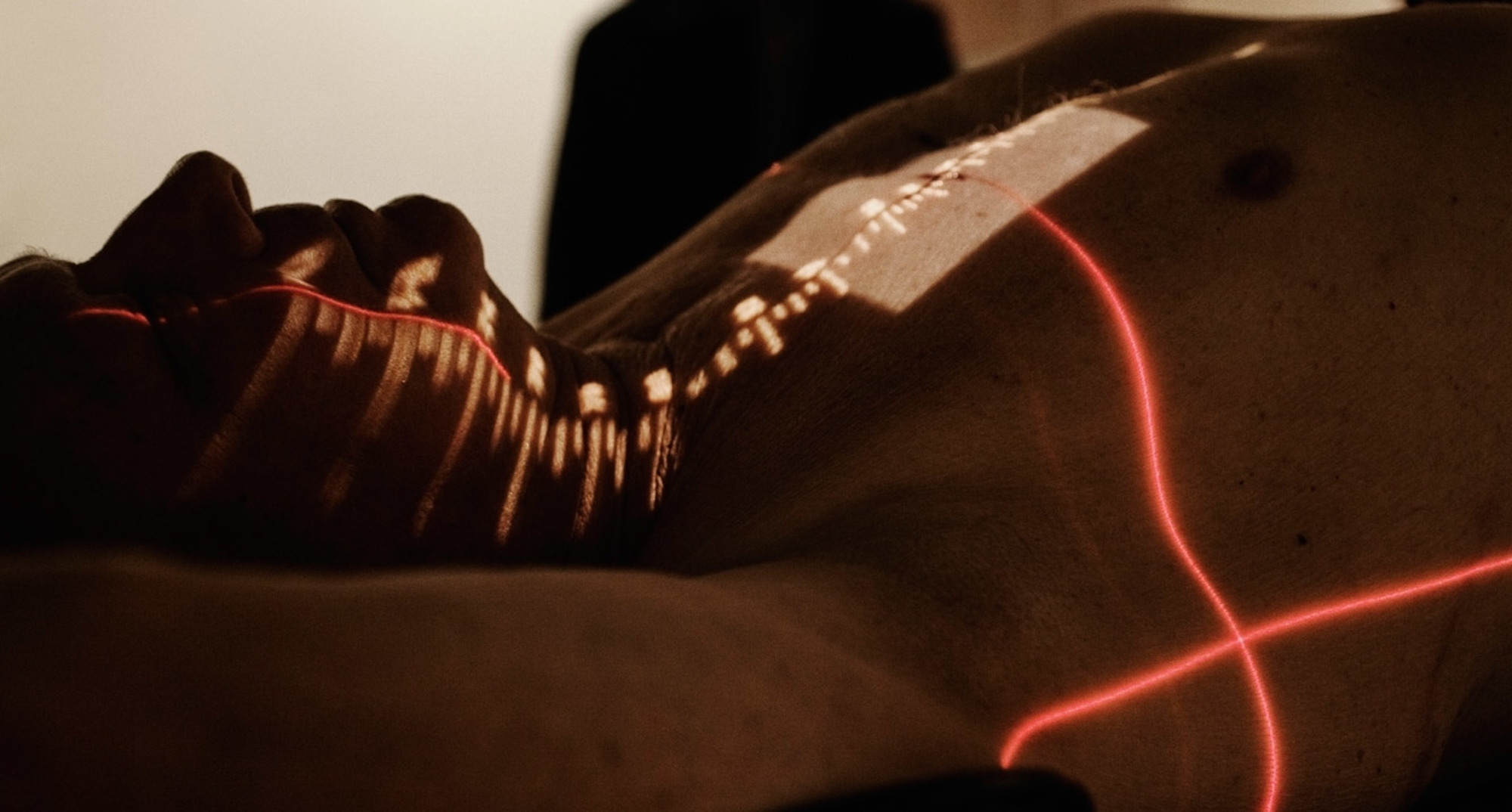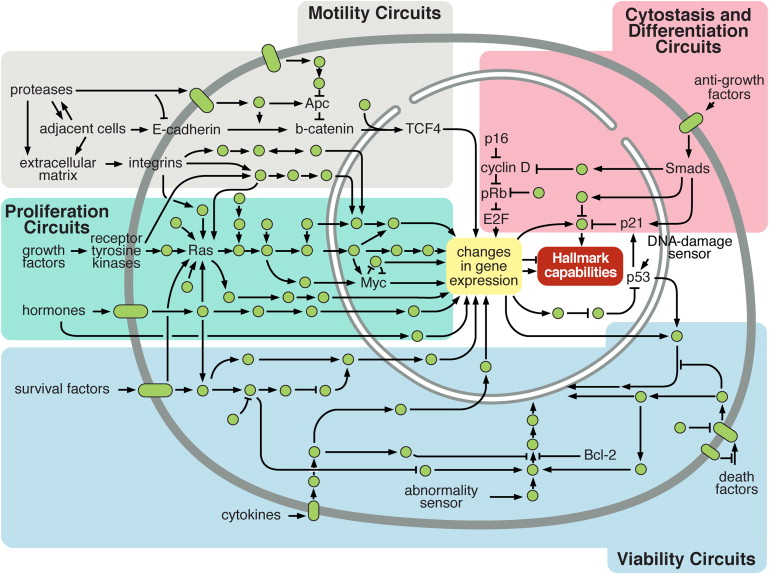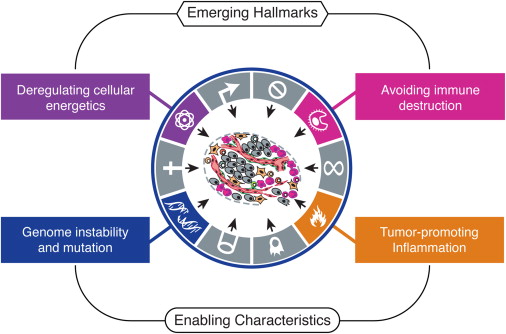Cancer death: what prevents in the fight against a terrible disease
In 2009, Vincent DeVita, a former director of the US National Institute of Oncology and a professor of medicine at the Cancer Center at the Department of Medicine at Yale University, was diagnosed with prostate cancer. Usually, hormone therapy is prescribed for this disease, but de Vita was lucky - his colleagues performed an operation on him that went beyond the standard treatment, and this saved his life.
Vincent DeVita is sure that such a treatment should be the norm, but the bureaucracy prevents doctors from using new tools and drugs, the bureaucracy prevents the introduction of innovations in medicine. Doctors and scientists do not speak openly about this problem, because they are afraid of harming their reputation.
According to DeVita, the phrase “We are unable to defeat cancer” does not mean that mankind does not have enough knowledge for this, but that the bureaucracy does not allow them to take advantage of the achievements of science.

In 2015, Vincent deVita, together with journalist Elizabeth DeVita, published the book “The Death of Cancer”, in which he spoke about a problem that was relevant for him, both from the point of view of the doctor and the point of view of the patient who was diagnosed with cancer. And he talked about how he first encountered the illness of a loved one.
In the 1940s, Vincent’s aunt and godmother, Violeta, stopped visiting his family, and her parents stopped talking about her. A few months later, the father said that the aunt is sick and wants to see her nephew. Then Vincent saw his aunt - exhausted, exhausted by the disease, dry. Many years later, he found out that her aunt died due to cervical cancer, which doctors discovered too late. It is worth saying that in those days the treatment of tumors was more difficult than now. Doctors, if they had discovered the tumor at an early stage, could have cut it out - causing harm to the patient, or using radiation - also not a very useful procedure for the body. There were no other drugs.
Twenty years after the death of aunt Violeta, Vincent became a trainee at the US National Cancer Institute. Vincent deVita writes that in the sixties, doctors and scientists who studied cancer were considered lunatics, losers or crazy losers. The chief physician at Columbia University did not send trainees to the oncology department, because this could harm their future career. A turning point occurred after a study in which a method for treating leukemia in children using a combination of drugs, that is, combined chemotherapy, appeared. Thanks to his experience with these drugs, Vincent DeVita developed a course that cured 80% of patients with malignant lymphatic tissue disease - Hodgkin's disease.
Richard Nixon, President of the United States, signed the National Cancer Program on December 23, 1971. After that, the US authorities spent more than one hundred billion dollars on this war. DeVita says that doctors are winning: by 1990, the overall cancer mortality rate in the US began to decline, and by 2005 the absolute number of patients dying of cancer died, despite the growing population. They began to treat childhood leukemia, the mortality rate from colon cancer decreased by 40% in twenty years, the mortality rate from breast cancer by a quarter, and mortality from prostate cancer decreased by almost 70%.
Vincent writes: “We have enough knowledge so that over the next ten years cancer is no longer considered one of the main threats to human health.” Combination chemotherapy helped reduce mortality from leukemia and lymphoma, and adjuvant chemotherapy, along with surgery and radiotherapy, reduced mortality from the most common forms of cancer. Targeted therapy, when the drugs themselves find and destroy micrometastases, made it possible to turn leukemia into a chronic disease that does not affect the patient's life. An important achievement was the use of the patient in the treatment of the immune system - it helps treat melanoma and helps even against advanced lung cancer.
In 2011, Dr. Robot Weinberg published in Cell magazine the article “Cancer Features: A New Generation.” Its essence is that cancer has eight distinctive features. That is, if there are hundreds of different tumors, there are signs that combine them:

The cancer cell was an ordinary adult cell. But at some point, the genes responsible for suppressing unwanted growth changed during mutations or damage. This is followed by another mutation or deviation of the control elements of the gene, and the cell receives a growth signal and begins to divide. Due to the fact that the gene does not signal the need to stop dividing, it continues to grow. The mechanism of self-destruction of cells does not work - this is the mechanism that destroys the gills and membranes on the fingers and toes of the embryo. The future cancer cell deceives the human immune system, bypassing another obstacle. To get blood, cancer cells replicate the ability to develop blood vessels.
Tumors at this stage need building material, and it receives it thanks to aerobic glycolysis - this mechanism works only in conditions of embryo development. And after that, the cancer cell should become immortal: it produces telomerase so that the human body ceases to struggle with unlimited cell division.
Cancer must spread. Death occurs more often not because of a tumor in the chest or colon, but because of metastases in the liver, brain, bone tissue. Cells move through the body.

Robert Weinberg in his work makes it clear that to defeat cancer, you need to work on all of its signs at the same time. It is necessary to look for new ways, conduct clinical trials, arbitrarily combine various drugs to simultaneously affect each of the signs. This method can bring results, but state standards do not allow scientists to get away from generally accepted practice and improvise to achieve these results.
You can not conduct research, record their results and make adjustments on the go. “Vince, if they left me alone, how many patients I could still heal,” DeVita mentions talking with an eminent research physician working on new drugs for complex forms of melanoma. According to Vincent DeVita, for forty years the law on the war against cancer has become obsolete, you need to change the system and continue to fight the disease with new methods.
Coordination between structural units is absent. There is a center - the National Cancer Program. There is a National Cancer Institute. Forty years ago, when Nixon signed the National Program, there were three cancer centers in the United States. Now there are much more of these centers, and a whole network of clinics is being monitored by the Program and the National Cancer Institute. These centers, which have vast practical experience in the treatment of cancer, do not have the opportunity to search for new ways, apply combined treatment, conduct clinical trials and make changes to them. Current standards do not give these centers any freedom, depriving patients and their families of a chance of salvation.
Vincent DeVita raised the issue of the need to change the funding system for centers. For forty years, this mechanism is outdated, it is time for the heads of oncological centers to manage the funds themselves and implement effective research projects. With all these difficulties, the fight against cancer in the United States is moving forward, says DeVita.
We constantly read news about new ways to fight tumors. In 2014, scientists from South Korea developed a nanorobot to fight cancer: they move to the tumor site in the salmonella bacteria, and then release capsules with drugs, which eliminates the side effects of chemotherapy. Danish biologists from the University of Copenhagen and the University of British Columbia in 2015 accidentally discovereda property of the malaria vaccine that can help in the fight against cancer - they found a common protein in the placenta and tumor, responsible for rapid growth, one of the signs of cancer. In April 2015, microbiologists from the University of Washington told that they deciphered the genomes of the tumors and the genomes of the patients themselves in order to isolate neoantigens - proteins located on the surface of cancer cells. As a result, scientists included neoantigens in vaccines, and the patient’s immune system recognized three proteins and began to produce T-regulatory cells responsible for the strength and duration of the immune response: “this work opens the way for personal immuno-oncology”.
A combination of new technologies with existing ones is needed to take cancer treatment to a new level. And for this, oncology clinics and doctors saving people from terrible illnesses need freedom - both in research and in the disposal of funds.
This article is based on the essay by Vincent DeVita and Elizabeth DeVita-Rebern, "The Death of Cancer."
Vincent DeVita is sure that such a treatment should be the norm, but the bureaucracy prevents doctors from using new tools and drugs, the bureaucracy prevents the introduction of innovations in medicine. Doctors and scientists do not speak openly about this problem, because they are afraid of harming their reputation.
According to DeVita, the phrase “We are unable to defeat cancer” does not mean that mankind does not have enough knowledge for this, but that the bureaucracy does not allow them to take advantage of the achievements of science.

In 2015, Vincent deVita, together with journalist Elizabeth DeVita, published the book “The Death of Cancer”, in which he spoke about a problem that was relevant for him, both from the point of view of the doctor and the point of view of the patient who was diagnosed with cancer. And he talked about how he first encountered the illness of a loved one.
In the 1940s, Vincent’s aunt and godmother, Violeta, stopped visiting his family, and her parents stopped talking about her. A few months later, the father said that the aunt is sick and wants to see her nephew. Then Vincent saw his aunt - exhausted, exhausted by the disease, dry. Many years later, he found out that her aunt died due to cervical cancer, which doctors discovered too late. It is worth saying that in those days the treatment of tumors was more difficult than now. Doctors, if they had discovered the tumor at an early stage, could have cut it out - causing harm to the patient, or using radiation - also not a very useful procedure for the body. There were no other drugs.
Twenty years after the death of aunt Violeta, Vincent became a trainee at the US National Cancer Institute. Vincent deVita writes that in the sixties, doctors and scientists who studied cancer were considered lunatics, losers or crazy losers. The chief physician at Columbia University did not send trainees to the oncology department, because this could harm their future career. A turning point occurred after a study in which a method for treating leukemia in children using a combination of drugs, that is, combined chemotherapy, appeared. Thanks to his experience with these drugs, Vincent DeVita developed a course that cured 80% of patients with malignant lymphatic tissue disease - Hodgkin's disease.
Richard Nixon, President of the United States, signed the National Cancer Program on December 23, 1971. After that, the US authorities spent more than one hundred billion dollars on this war. DeVita says that doctors are winning: by 1990, the overall cancer mortality rate in the US began to decline, and by 2005 the absolute number of patients dying of cancer died, despite the growing population. They began to treat childhood leukemia, the mortality rate from colon cancer decreased by 40% in twenty years, the mortality rate from breast cancer by a quarter, and mortality from prostate cancer decreased by almost 70%.
We have enough knowledge that over the next ten years, cancer is no longer considered one of the main threats to human health
Vincent writes: “We have enough knowledge so that over the next ten years cancer is no longer considered one of the main threats to human health.” Combination chemotherapy helped reduce mortality from leukemia and lymphoma, and adjuvant chemotherapy, along with surgery and radiotherapy, reduced mortality from the most common forms of cancer. Targeted therapy, when the drugs themselves find and destroy micrometastases, made it possible to turn leukemia into a chronic disease that does not affect the patient's life. An important achievement was the use of the patient in the treatment of the immune system - it helps treat melanoma and helps even against advanced lung cancer.
In 2011, Dr. Robot Weinberg published in Cell magazine the article “Cancer Features: A New Generation.” Its essence is that cancer has eight distinctive features. That is, if there are hundreds of different tumors, there are signs that combine them:
- avoid cell death,
- ability to grow independently
- insensitivity to growth inhibition signals,
- penetration into tissues and metastasis,
- unlimited division potential,
- proliferation of blood vessels
- abnormal cell metabolism,
- immune system bypass.

The cancer cell was an ordinary adult cell. But at some point, the genes responsible for suppressing unwanted growth changed during mutations or damage. This is followed by another mutation or deviation of the control elements of the gene, and the cell receives a growth signal and begins to divide. Due to the fact that the gene does not signal the need to stop dividing, it continues to grow. The mechanism of self-destruction of cells does not work - this is the mechanism that destroys the gills and membranes on the fingers and toes of the embryo. The future cancer cell deceives the human immune system, bypassing another obstacle. To get blood, cancer cells replicate the ability to develop blood vessels.
Tumors at this stage need building material, and it receives it thanks to aerobic glycolysis - this mechanism works only in conditions of embryo development. And after that, the cancer cell should become immortal: it produces telomerase so that the human body ceases to struggle with unlimited cell division.
Cancer must spread. Death occurs more often not because of a tumor in the chest or colon, but because of metastases in the liver, brain, bone tissue. Cells move through the body.

Robert Weinberg in his work makes it clear that to defeat cancer, you need to work on all of its signs at the same time. It is necessary to look for new ways, conduct clinical trials, arbitrarily combine various drugs to simultaneously affect each of the signs. This method can bring results, but state standards do not allow scientists to get away from generally accepted practice and improvise to achieve these results.
You can not conduct research, record their results and make adjustments on the go. “Vince, if they left me alone, how many patients I could still heal,” DeVita mentions talking with an eminent research physician working on new drugs for complex forms of melanoma. According to Vincent DeVita, for forty years the law on the war against cancer has become obsolete, you need to change the system and continue to fight the disease with new methods.
Vince, if they had left me alone, how many patients I could have cured!
Coordination between structural units is absent. There is a center - the National Cancer Program. There is a National Cancer Institute. Forty years ago, when Nixon signed the National Program, there were three cancer centers in the United States. Now there are much more of these centers, and a whole network of clinics is being monitored by the Program and the National Cancer Institute. These centers, which have vast practical experience in the treatment of cancer, do not have the opportunity to search for new ways, apply combined treatment, conduct clinical trials and make changes to them. Current standards do not give these centers any freedom, depriving patients and their families of a chance of salvation.
Vincent DeVita raised the issue of the need to change the funding system for centers. For forty years, this mechanism is outdated, it is time for the heads of oncological centers to manage the funds themselves and implement effective research projects. With all these difficulties, the fight against cancer in the United States is moving forward, says DeVita.
We constantly read news about new ways to fight tumors. In 2014, scientists from South Korea developed a nanorobot to fight cancer: they move to the tumor site in the salmonella bacteria, and then release capsules with drugs, which eliminates the side effects of chemotherapy. Danish biologists from the University of Copenhagen and the University of British Columbia in 2015 accidentally discovereda property of the malaria vaccine that can help in the fight against cancer - they found a common protein in the placenta and tumor, responsible for rapid growth, one of the signs of cancer. In April 2015, microbiologists from the University of Washington told that they deciphered the genomes of the tumors and the genomes of the patients themselves in order to isolate neoantigens - proteins located on the surface of cancer cells. As a result, scientists included neoantigens in vaccines, and the patient’s immune system recognized three proteins and began to produce T-regulatory cells responsible for the strength and duration of the immune response: “this work opens the way for personal immuno-oncology”.
A combination of new technologies with existing ones is needed to take cancer treatment to a new level. And for this, oncology clinics and doctors saving people from terrible illnesses need freedom - both in research and in the disposal of funds.
This article is based on the essay by Vincent DeVita and Elizabeth DeVita-Rebern, "The Death of Cancer."
